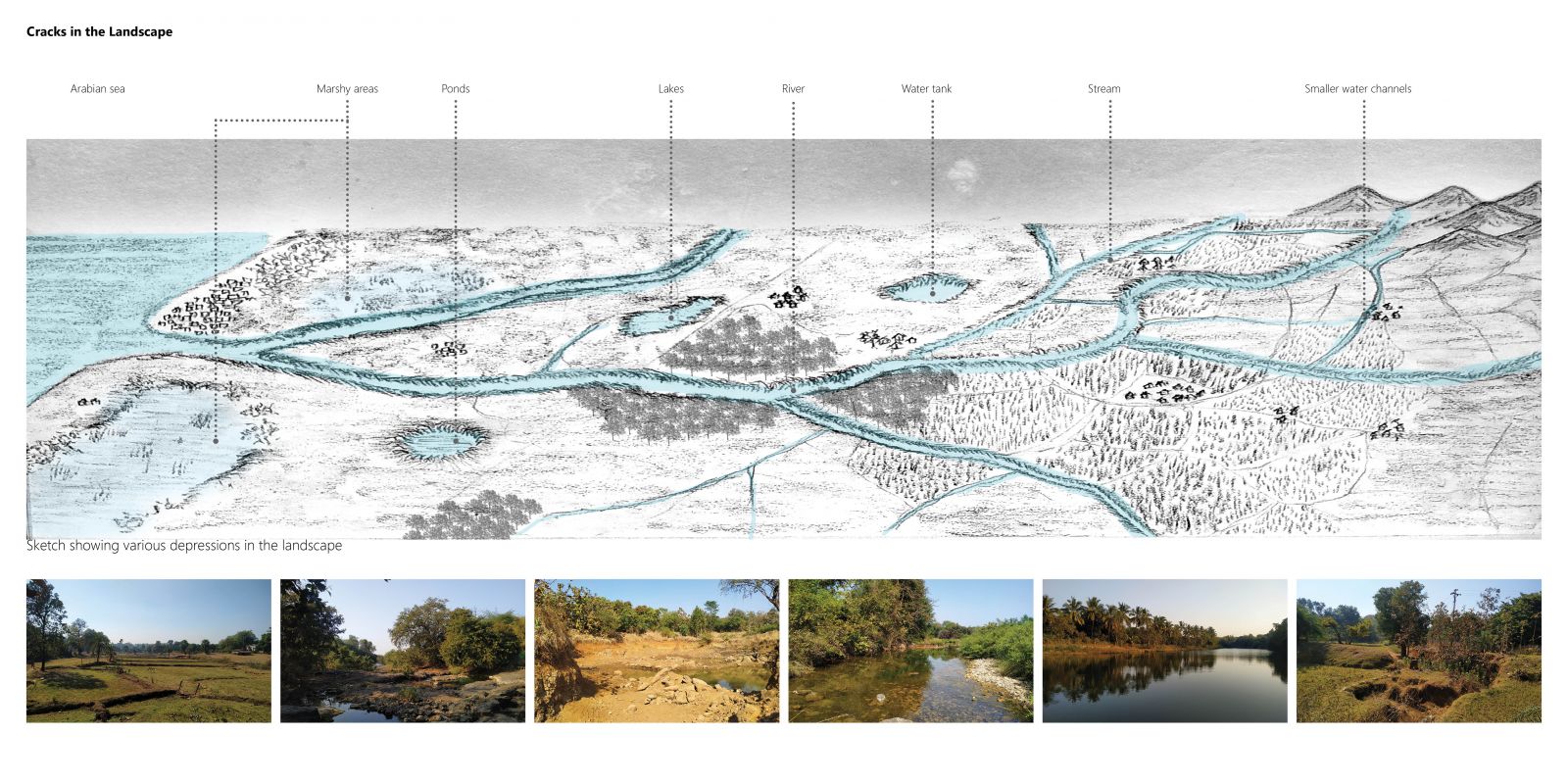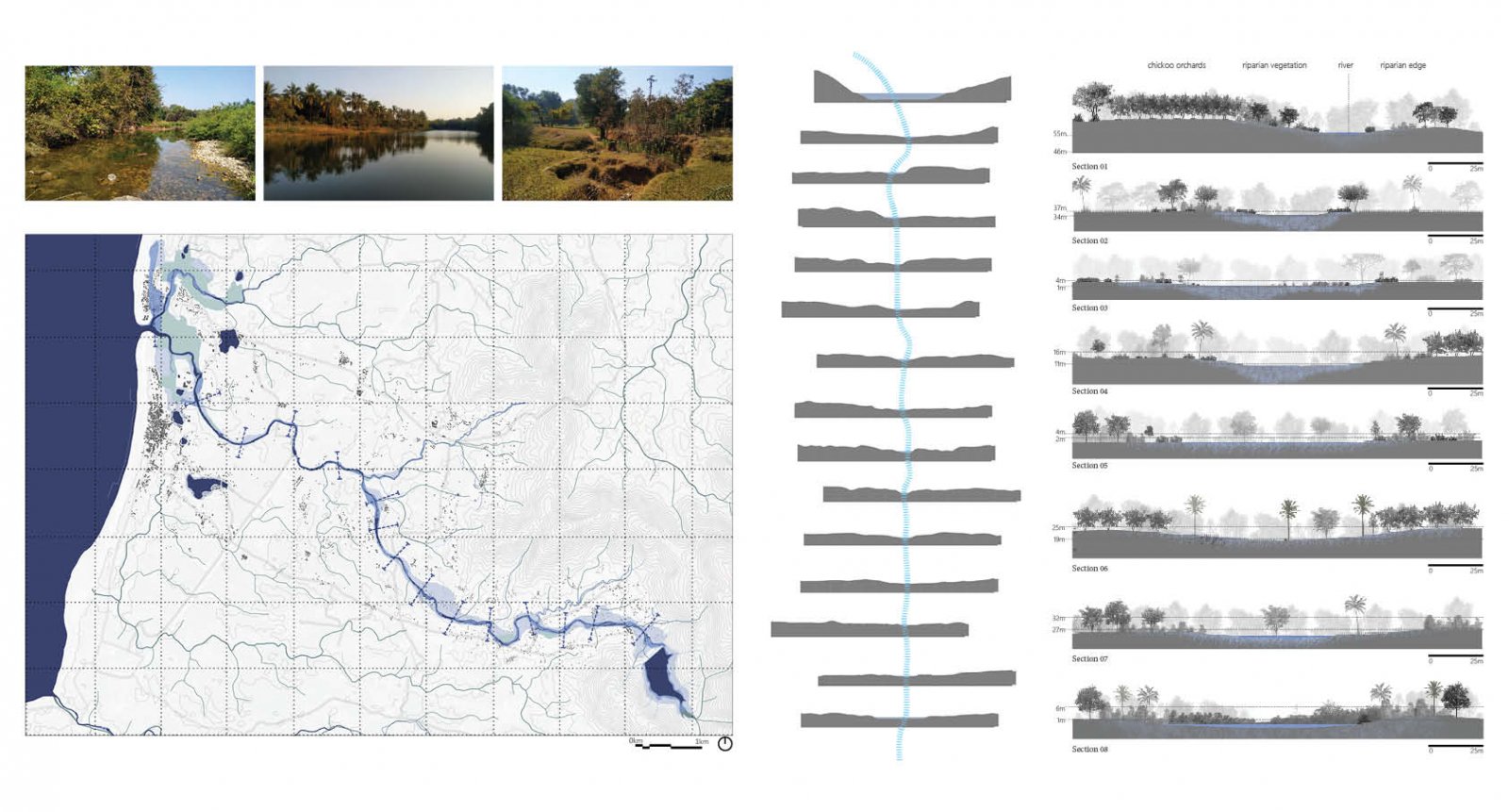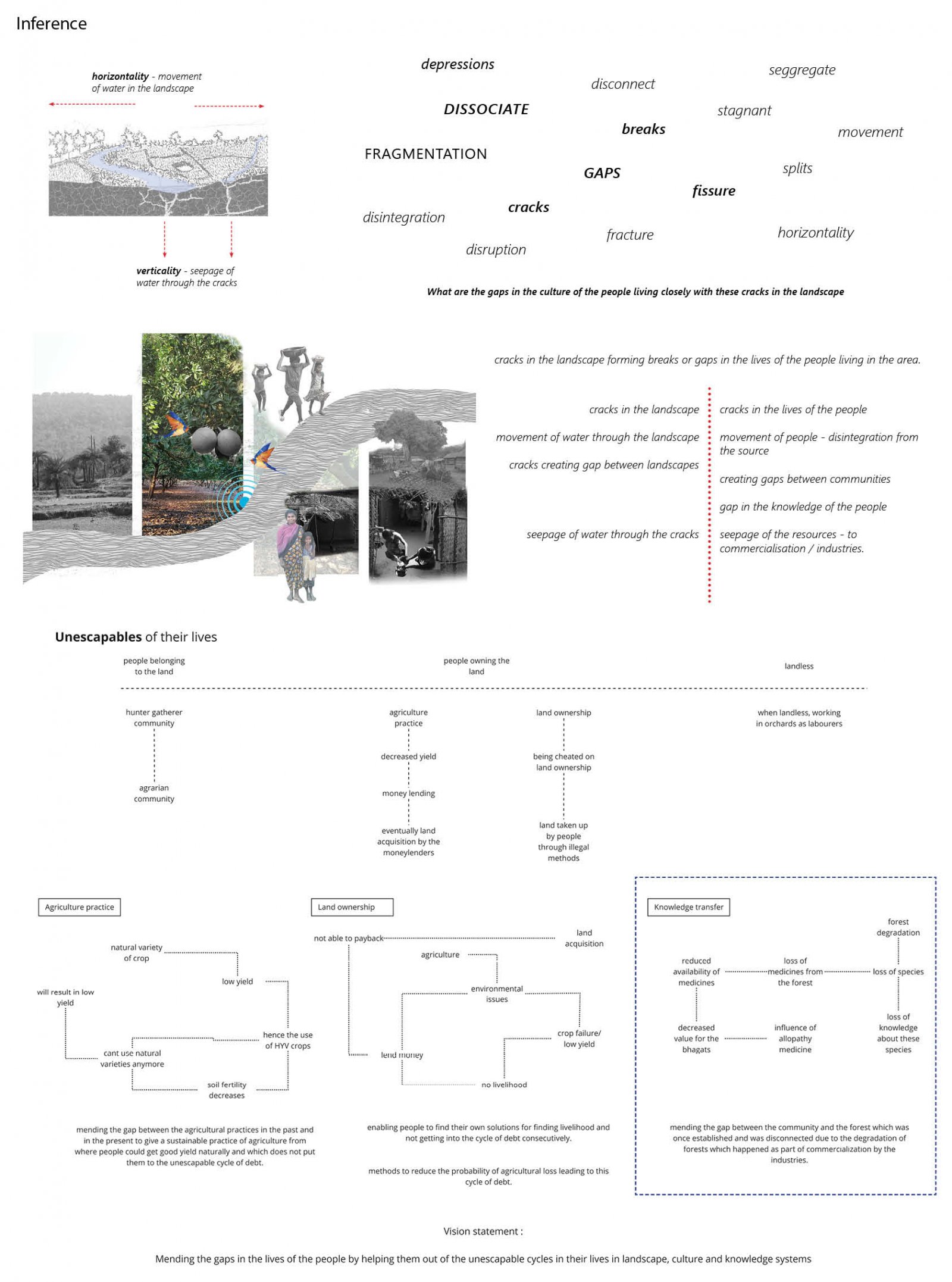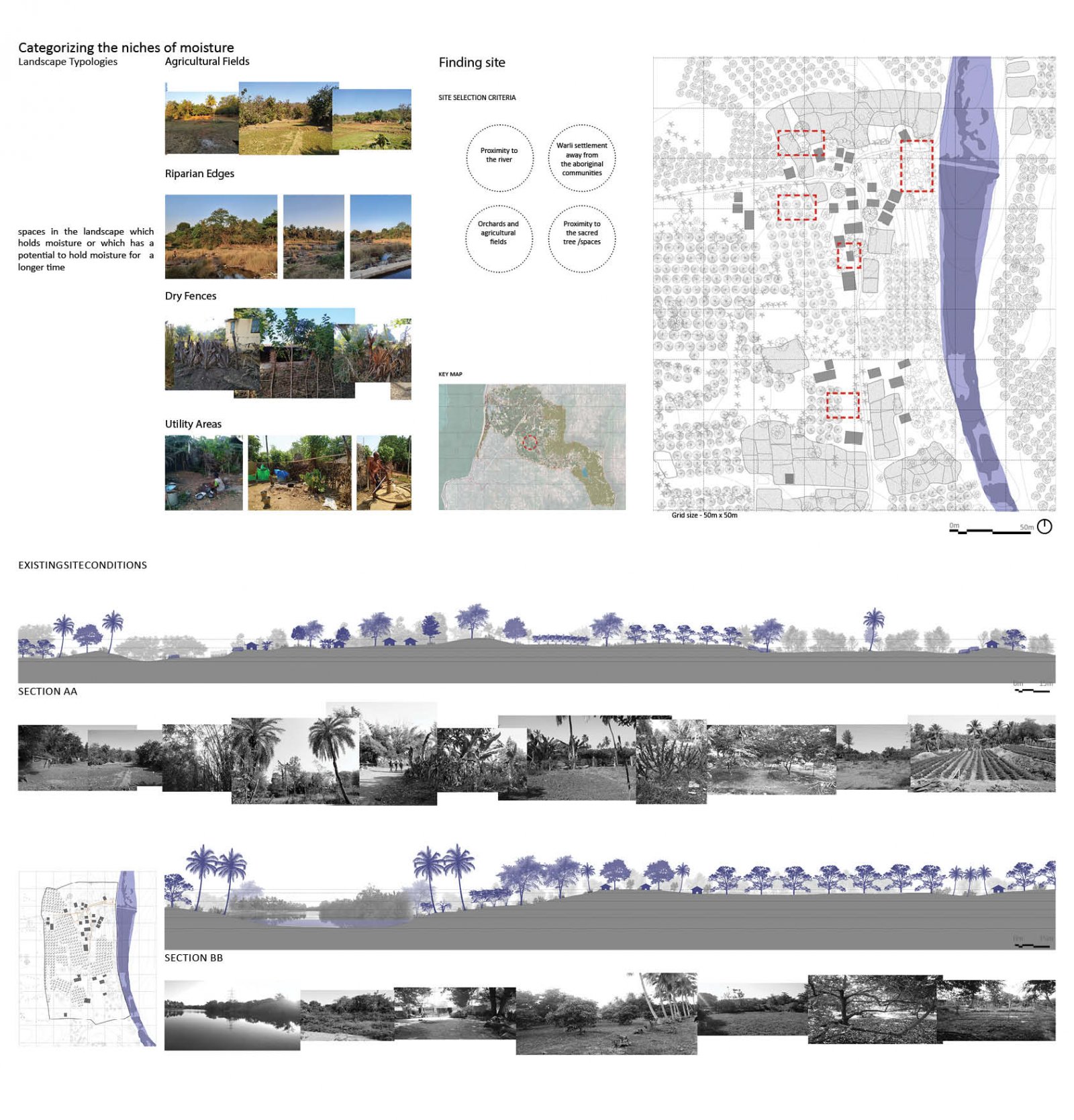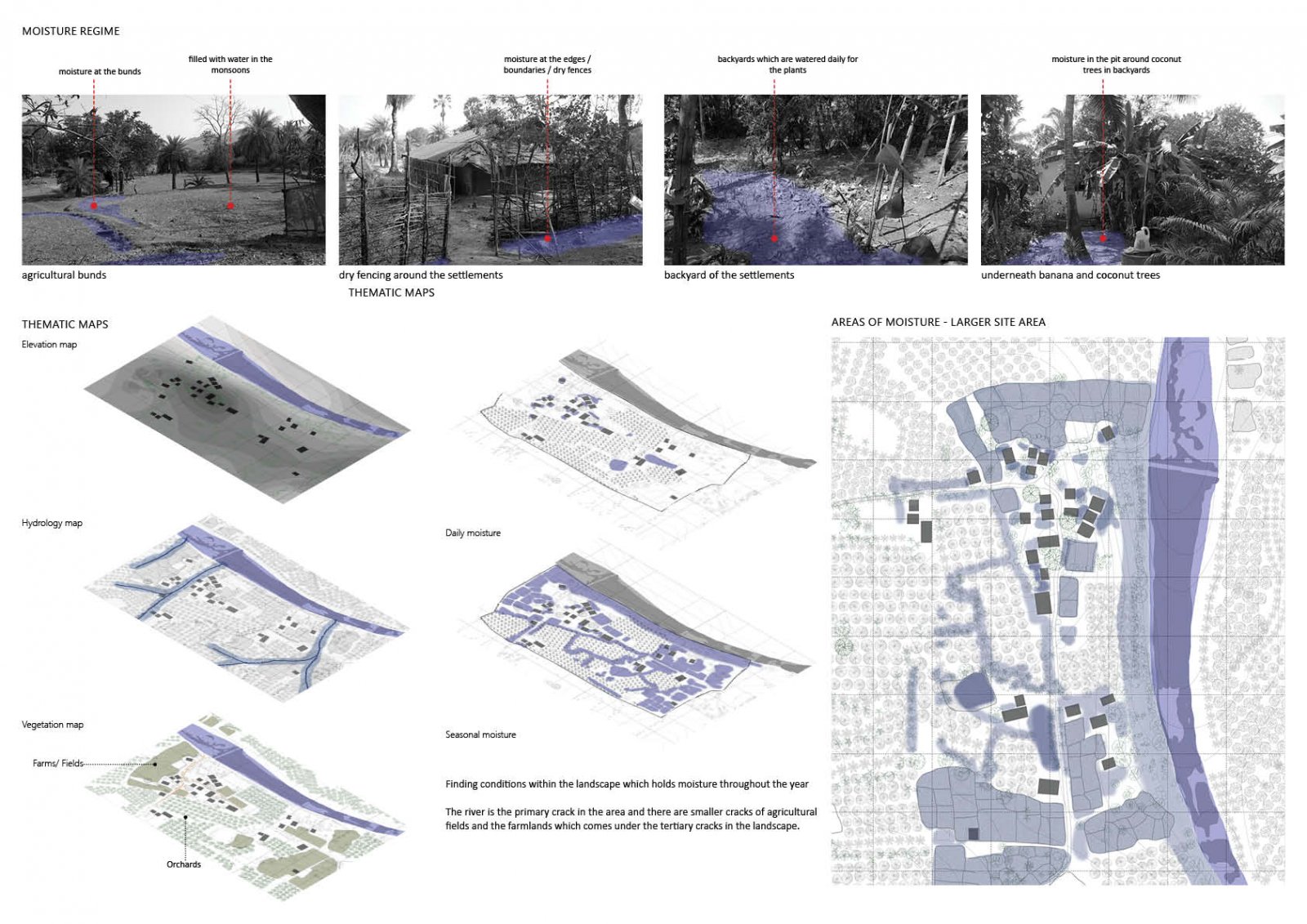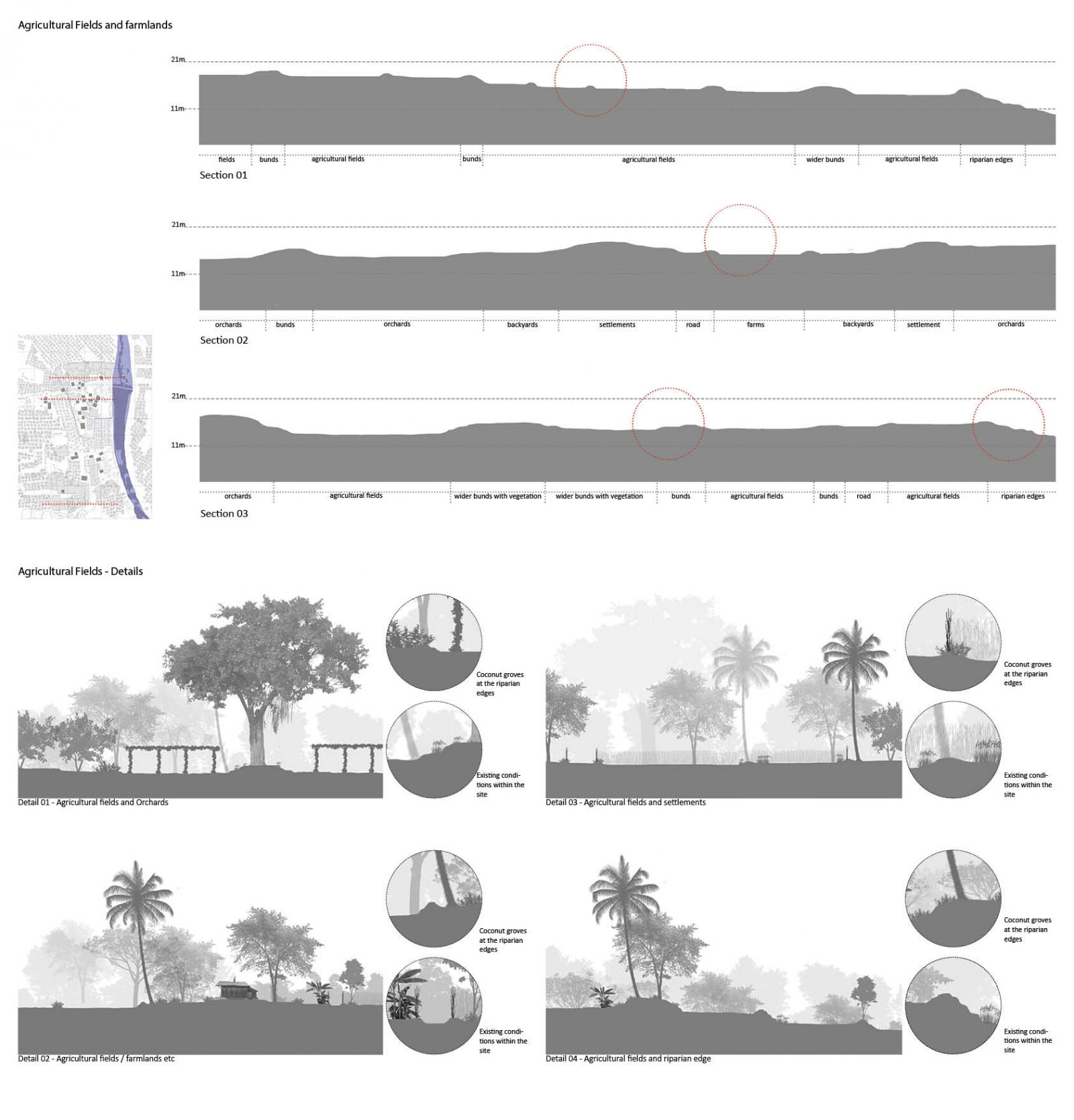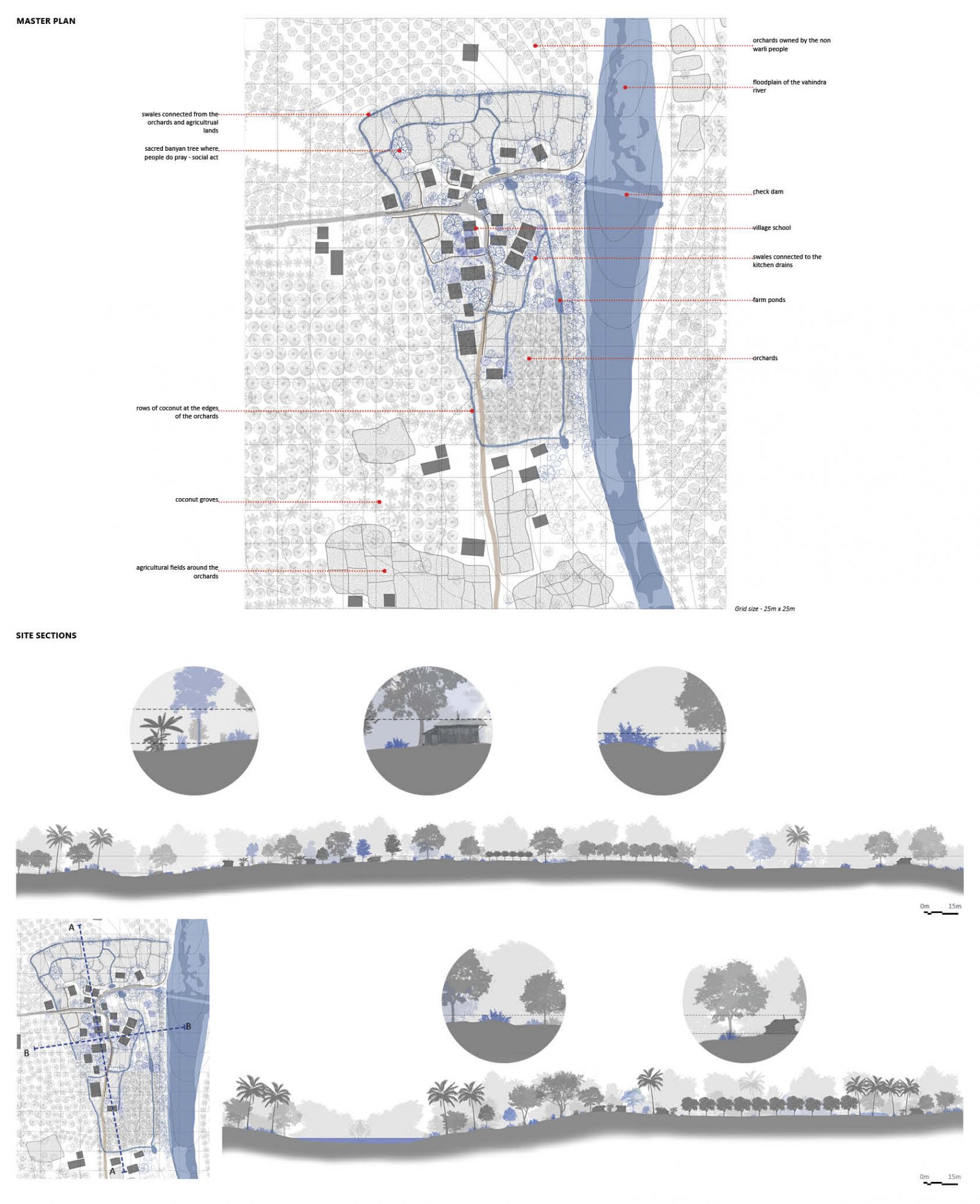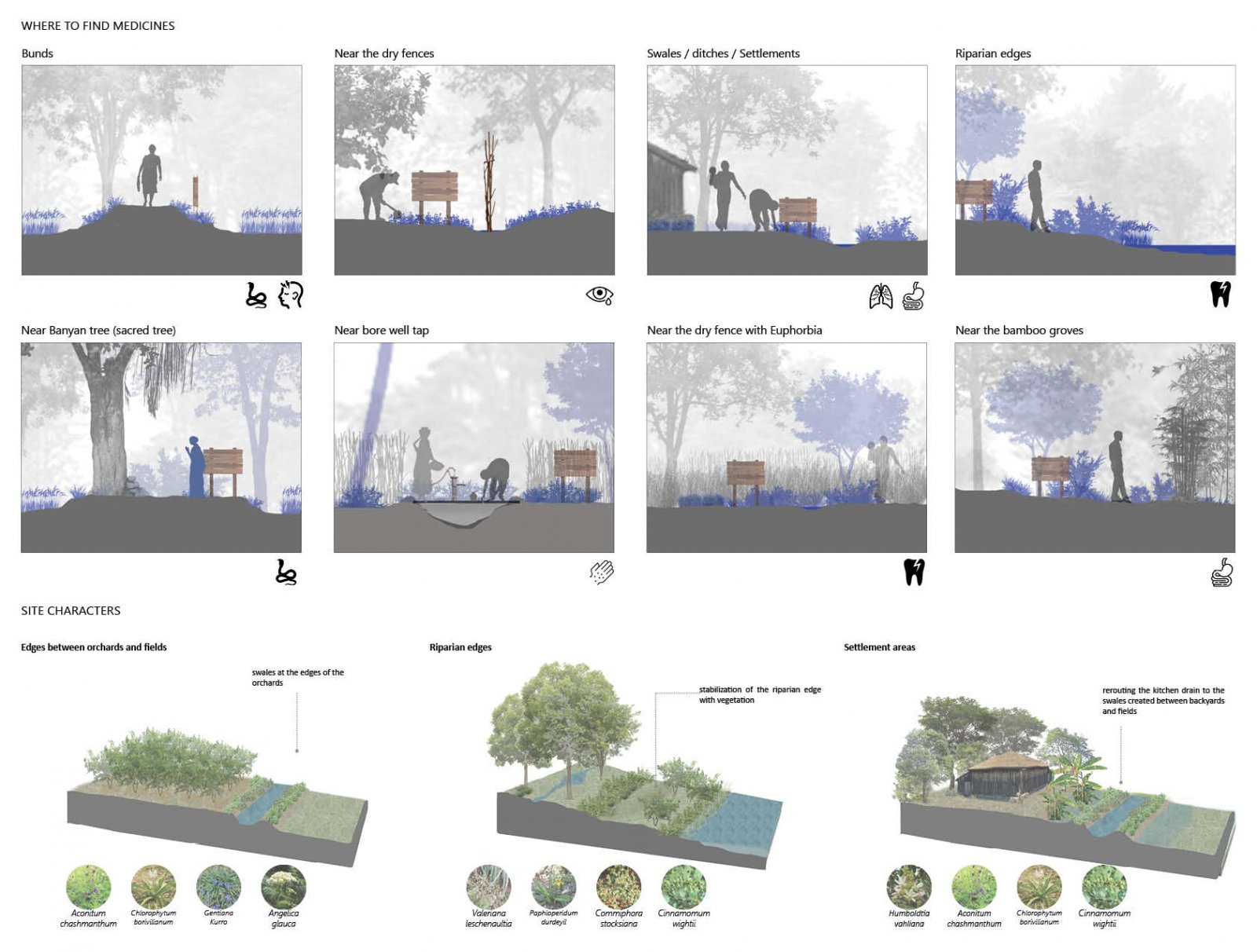- Student SNEHA B JOHN
- Code PLA20349
- Faculty Architecture
- Unit L4 Studio Unit
- Tutor/s Divya Shah
- TA Sankalpa Patel
The landscape of Dahanu consists of several cracks and depressions within it, of which the primary is the river Vahindra and its streams and the rivulets from the secondary cracks. During the field study, many attributes of the landscape were observed and identified. Several smaller units of cracks were also observed, which could ideally be categorized as the tertiary cracks in the landscape. Likewise in the cultural layers, certain gaps in the lives of the people were observed in their daily activities and cultural study. One such crack in their lives is the gap in their knowledge systems. An instance of this gap is the ethnobotanical knowledge systems and its root being forest degradation and loss of flora species. After a thorough site study, to identify points of cracks and retention of the aspect of moisture followed by research to find endemic medicinal plants, the project was derived. The project aims to find the potential growth conditions within the landscape and reintroduce species with endemic medicinal associations and healing properties that are being lost from this landscape and the lives of the Warlis. Hence, filling the cracks in the landscape with the native ethnobotanical species of plants. This process also formalizes the ethnobotanical knowledge through the act of spatial markers and recognition. This is achieved by associating specific plant guilds to familiar elements of culture, and landscape associated with the cracks of moisture.
